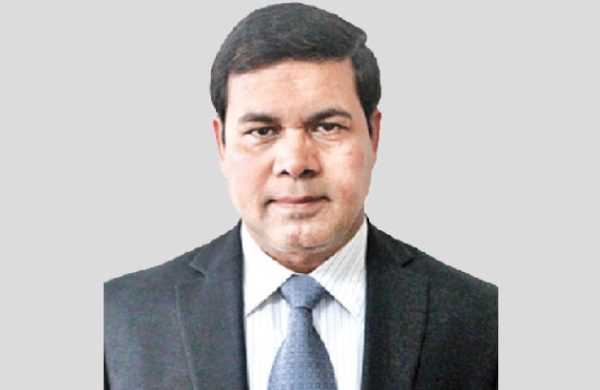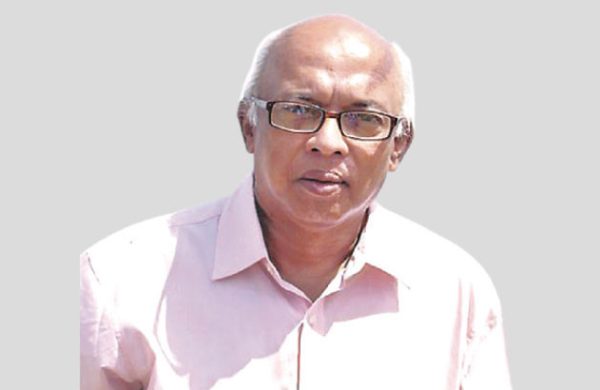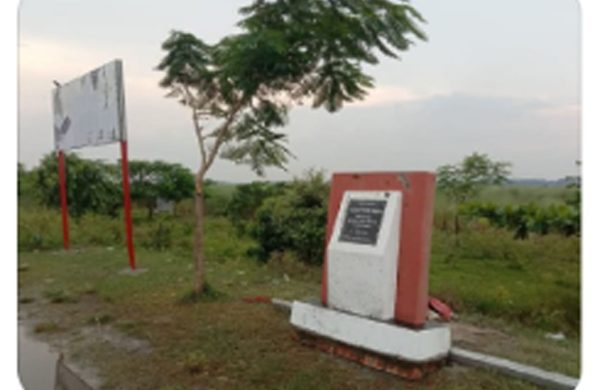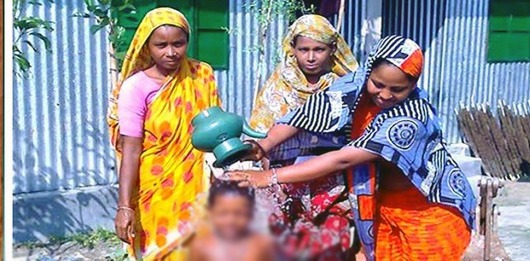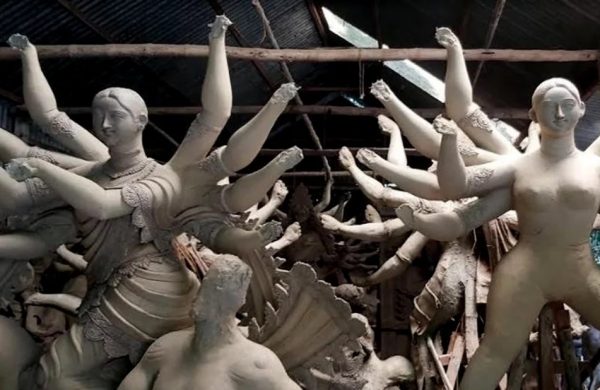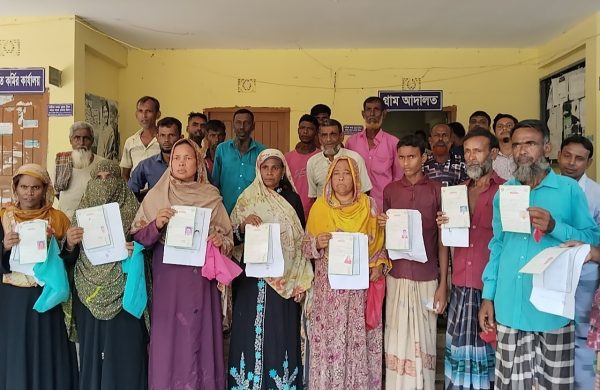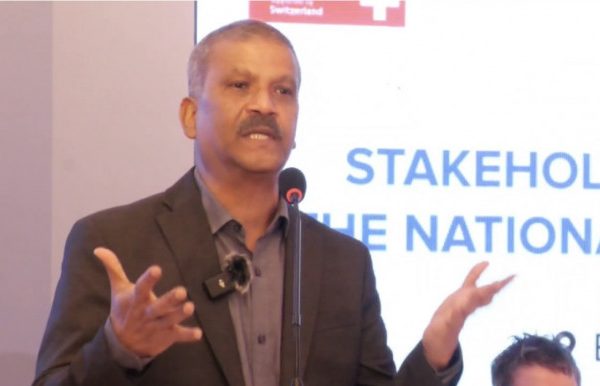How Can Bangladesh’s Water Crisis Be Solved?
- Update Time : Sunday, May 18, 2025

—Zubair Hasan—
The people of Bangladesh depend on rivers for drinking water and sanitation. Their agriculture and livelihoods also rely on rivers. River transport is an important mode of travel for them. They catch a large quantity of fish from rivers. The cultural foundation of their life is the “rice and fish lifestyle.” But this culture of “rice and fish life” may not survive anymore. The whole way of life is becoming uncertain. The reason is that the rivers of Bangladesh are no longer alive.
After the construction of the Farakka Barrage on the upper Ganges River, the flow and volume of water in the Padma River have decreased during the dry season. As a result, Hilsa fish no longer come upstream from the sea like before to lay eggs. So Hilsa is no longer being caught as before. With the reduced flow of water in the Padma, its branch rivers have become nearly dead. In the past, because of strong water flow, the saltwater brought to land by the tides every day in South Bengal used to be washed back into the sea. But now, that no longer happens. Many lands in the coastal areas of South Bengal are facing salinity problems. The soil is becoming barren.
After the Ganges water was diverted in 1975, India built another dam on the Teesta River upstream, called the Gajoldoba Barrage. It started operation in 1998. This brought another disaster for downstream Bangladesh. Due to this barrage, the northern districts of Bangladesh have suffered serious consequences.
Most of the water that comes to Bangladesh enters through the Brahmaputra (also called Jamuna). India is now have a plan to divert Brahmaputra water by digging canals to carry it from Assam to the Ganges. Then, through another canal, it plans to carry some of that water to South India’s Kaveri River. On the other hand, China also wants to use the water of the Yarlung Tsangpo (Brahmaputra) in Tibet for irrigation and is building a barrage over it.
If both India and China withdraw water from the Brahmaputra, the Jamuna in Bangladesh will not remain the same. Less water will enter through the Jamuna. This will reduce the water in the Padma too, since near Goalondo, the Padma is fed by the Jamuna. The sharp flow of Jamuna obstructs Padma and creates a weaker flow at the Goalondo conjunction point. As a result Padma’s water remain steady and does not rush quickly toward the sea. But if Jamuna doesn’t have enough water then the Padma will rush toward sea and as a result of this it will dry out even more. So if India and China withdraw water from Brahmaputra, this will bring major changes to the geography of Bangladesh, and the water crisis will become more serious. It will raise the question of our very survival. We may not even get enough water to quench our thirst.
A few years ago, the Indian government planned to build a dam at Tipaimukh in Manipur state on the Barak River to produce hydroelectric power. The Barak River enters Bangladesh in Sylhet and splits into two branches—Surma and Kushiyara. These two rivers are the main sources of the Meghna River’s water. So, if a dam is built on the Barak River, the Meghna will also become a dead river. Since the Meghna joins the Padma, a water shortage in the Meghna will also affect the Padma’s flow. This way, the entire river system of Bangladesh is becoming increasingly uncertain. If the waters of the Brahmaputra and Barak are also withdrawn like the Ganges and Teesta, then river-based Bangladesh will no longer be a land of rivers. The country’s geography will drastically change. A massive disaster will strike the people of this country. Our agricultural production and fish resources will vanish. Rivers will turn into dead canals, and the water transport system will collapse. River erosion, soil degradation, the decline of groundwater levels, waterlogging, and various other natural disasters will put people’s lives and properties at risk.
Among the 54 rivers flowing from India into Bangladesh, only the Ganges has a water-sharing treaty between the two countries. This was a 30-year treaty signed in 1996. But there is doubt about how well this treaty is being applied and implemented. The treaty will end in 2026, but it is uncertain whether a new one will be signed. Despite many talks, there is still no agreement on the Teesta River water. Earlier, the water conflict was only with India. But now, as China builds a barrage on the Yarlung Tsangpo (Brahmaputra), Bangladesh will receive less water through the Brahmaputra too. Therefore, China, India, and Bangladesh must reach a joint agreement. Otherwise, the water problem will not be solved. But if Bangladesh can make a separate agreement with China about Brahmaputra water, that would be even better. One important thing to remember is that even if Bangladesh signs water-sharing deals with China and India, under international water-sharing rules, rivers in Bangladesh will never get as much water as before. So Bangladesh must develop its own internal solution to the water crisis.
Bangladesh still receives enough rainfall during summer and monsoon seasons. Our main water shortage occurs in winter’s dry season. By building artificial reservoirs, the rainwater and river water during the rainy season can be stored and used in the dry season. Bangladesh needs to take steps in this regard. This is the best way to deal with the water crisis. If we can store the large amount of rainfall and river water during the monsoon, no country will be able to turn Bangladesh into a desert by plotting against it.
Not all crops need the same amount of water in agriculture of Bangladesh. For example, Boro rice (also called IRRI rice) needs a lot of water—about 3000 liters to grow one kilogram. On the other hand, wheat needs only 1500 liters per kilogram. So, in winter, we should grow more wheat instead of rice. There are many other crops that need less water than rice—like millet, barley, and maize. We should try to increase the cultivation of these crops too or should look for something alternative.
Due to the use of high-yielding rice varieties, our land is now lacking in nutrients. In the past, when planting rice in our soil, we didn’t need to add zinc-based fertilizer. But now, in many places, rice won’t grow without it. High-yielding rice takes about 13 times more nutrients from the soil than traditional rice, and it also uses a lot more water. Without fertilizers, no crops are growing now. So, farming high-yielding rice has become very expensive. In contrast, traditional rice was much cheaper to grow, and the profit from selling it was relatively higher.
Groundwater is formed when rainwater seeps into the ground and gets stored. But with the heavy use of deep tube wells to extract water, rainwater is no longer properly stored underground. So, the groundwater level is decreasing, and there’s a growing shortage of drinking water. In many areas, the situation is becoming like a desert. Because of over-extraction through deep tube wells, there is now a severe shortage of drinking water in many parts of the country. People often create one problem while solving another. In our country, irrigation using deep tube wells has been expanded without control. This may turn the country into a desert. We are using deep tube wells for irrigation to increase crop production in northern Bangladesh. But the amount of water we are extracting from underground is not being replenished by rainwater. As a result, there is a terrible shortage of underground water. The groundwater level is falling. Even deep tube wells are not pulling up water like before. So irrigation is being hampered. Also, because of water extraction by deep tube wells, water from canals, rivers, and ponds is sinking into the ground. These water bodies are drying up. And because rivers and ponds are drying, fish are no longer found like before. The shortage of fish has become severe. Fish are a major source of animal protein. The fish shortage is creating nutrition problems. This has become a serious issue. In trying to grow more crops, we are creating a food crisis in another way. Due to water extraction from underground, many small rivers are disappearing. Although we have policies in place to protect rivers, we are very relaxed when it comes to implementing them.
Bridges built on rivers eventually act like small dams or barrages. Because the pillars of the bridges obstruct water flow, the current becomes slower. Slower flow causes river-borne silt to accumulate, forming sandbars. This reduces the depth of rivers.
After the Farakka Barrage was launched in 1975, the Padma lost much of its depth. Now we have built two large bridges over the Padma—Lalon Shah Bridge near the Hardinge Bridge and the Padma Bridge at Mawa. These bridges will make the Padma lose even more depth. We have built these bridges, but we are not thinking about how they will affect the Padma’s condition or its branch rivers’ flow. If China and India withdraw water from the Brahmaputra, the Jamuna will have less water. And if the Jamuna has less water, the Padma will too, because the Jamuna flows into the Padma. In this situation, if we keep building bridge after bridge over rivers, it could cause major harm to our river systems.
River routes are still an important means of public transport in our country. Our trade and commerce also depend on river transport. If river-based trade falls, our economy will be harmed. This is easy to understand. Even without building bridges, it is possible to improve the transport system. Today, building tunnels under rivers is not a difficult task. Many countries now avoid building bridges over rivers and instead make tunnels to protect rivers. But in our country, we are not seriously considering building tunnels under rivers to improve transport. We are only focusing on building bridges over rivers. This policy may cause big damage to our economy.
Already, many roads have been built in our country without proper planning. Many culverts and small bridges built for drainage are not letting water flow properly. This is causing harmful waterlogging in many areas. As a result, crops are no longer growing in fields as before. Rivers not only bring water to a country, but they also help remove water. In the past, floods were a problem in our country. Now, in many places, water drainage has become a major issue. One of the main reasons is that rivers no longer flow like before. For economic development, we are doing many things that go against nature. This is causing many unexpected problems. One example is the rise in waterlogging. Because of a lack of proper planning, while solving one problem, we are creating another.
So now is the time for us to take proper initiatives and actions regarding rivers and the overall water crisis. People must become very aware of river conservation and water management. In the past, it was not urgent. But now, it is extremely necessary.
———————————————————————————–
The writer is a political analyst






